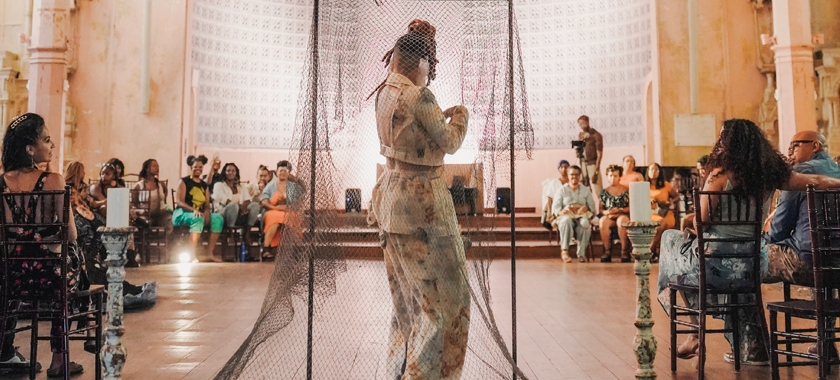
Where Art Meets the Community: A Check-In with 2022 Anonymous Was A Woman Environmental Art Grants Recipients
With the launch of the 2024 grant cycle, we’re highlighting the impact of inaugural grant recipients’ environmental art projects.
The Anonymous Was A Woman Environmental Art Grants (AWAW EAG) program is now open for its third cycle, with opportunities for women-identifying artists to receive up to $20,000 to support their environmental art projects that inspire thought, action, and ethical engagement.
AWAW EAG projects not only point at problems, but aim to engage an environmental issue at some scale. The intended impact of the project is an important factor in the selection process. All selected projects must benefit the public in some way by organizing a public engagement within the grant term; it must be free to attend, open to the general public, and must add value to the public sphere.
Here, we check in with a few of the inaugural AWAW EAG recipients to learn more about their work and how they engaged local communities in activities that inspired learning, sharing, and empowerment.
Amara Abdal Figueroa, Tierrafiltra, Borikén
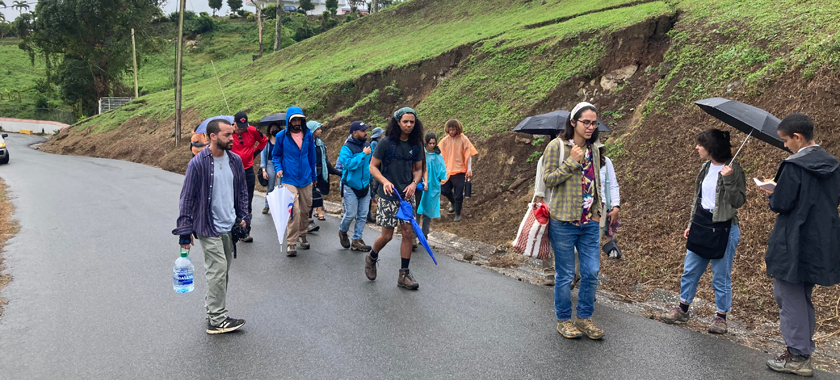
Tierrafiltra honors the relationship between craft and the ecosystem by developing a ceramic water filter using locally sourced materials, primarily clay and an organic biproduct like sawdust: a possible solution to a problem that affects the archipelago of Borikén (Puerto Rico) both in catastrophic moments, when electric and water grids fail, and in the everyday. The project aims to grow into an organism that can mitigate large landslides and conserve water by processing local clay into material for both art and water filters in and for Borikén.
During the course of the grant period, Hurricane Fiona caused a shift in focus after it triggered landslides around the archipiélago in September 2022. Said Abdal Figueroa: “According to the Collaborative Center for Landslide Geohazards, landslides are the ‘forgotten geohazard,’ lacking the integrated, national attention required to better understand these phenomena. The urgency to address these was intuitive and most obvious.”
This shift resulted in a “walkshop” with 35 participants and a waiting list of 20 led by Abdal Figueroa and her collaborator Merari Torres Amaro. They formalized ties with Slides PR (landslide data and education organization stemming from the local university) and Protectores de Cuencas (an organization focused on watershed protection) and invited workshop participants to collectively read the landscape. The workshop was followed by two presentations in an improvised classroom in the mountains of Cidra. After the successful first workshop, she co-facilitated a second workshop that covered landslide data and a practical component for mitigating landslides. In total, approximately 50 people attended.
Through these collaborations, Abdal Figueroa was encouraged to attend a conference on erosion where she was the only artist, advocating for arts as a tool for disseminating this data.
“Since having been more exposed to researchers in the field, bringing the arts with me, I have been articulating with even more confidence how to approach clay in nature, encouraging an approach that is more along the lines of mitigation instead of extraction. While facilitate learning experiences has also been informed by this: it is important to make even more obvious connections on sourcing clay in order to consider preventing erosion in already vulnerable sites, in order to remove this sediment that would eventually end in our water reservoirs, negatively impacting our capacity to store the water of even more dubious quality,” she added.
paris cyan cian, modjeskamodjeskamodjeska, Louisiana
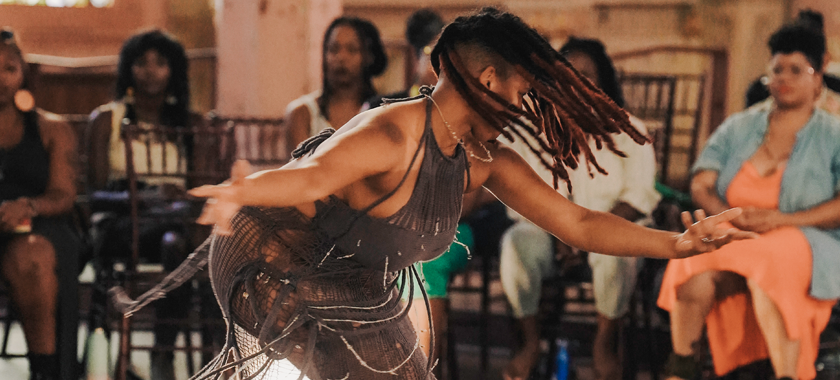
modjeskamodjeskamodjeska is a multi-site durational performance installation offering a collective activation of prayer that calls attention to Black memory, the erosion of the Louisiana coastline, and hurricanes. The piece is inspired by the livelihood of Black girls who are with/of the water, the annual ritual of Hurricanes in New Orleans, and the embodiment of the living/non-living along waterways and shorelines.
cyan cian, founder of theShoreCo., premiered modjeskamodjeskamodjeska at the Church of Hotel Peter and Paul in New Orleans, Louisiana, in Summer 2023 in collaboration with The Shore Collective artists from across the U.S. They had a total of 10-15 people who supported them with the one-day installation build, plus seven core collaborators who made the presentation possible. The Church event brought together 120 people, the majority of whom were local to New Orleans.
In 2023, cyan cian completed three residencies: Visiting Guest Artist at Hollins University; Guest Artist with Liberated Planet Studio in Vancouver, B.C; and RPPL Artist in Residence at Sipp Culture in Utica, MS. For this work, she engaged in site-specific research learning from Black girls across North America about coastal restoration and oyster care practices and history. She will be a Rising: Climate Crisis Artist-in-Residence at A Studio in the Woods this summer in New Orleans, LA.
Said cyan cian: “I feel incredibly inspired and encouraged to continue moving forward with this project, especially considering the ever-changing climate crisis that we are experiencing in Louisiana and beyond. Over the grant term, my goals shifted due to a new normal of climate patterns and capacity. I was invited to perform a segment of the work in New York in collaboration with the Billion Oyster Project at the Amanda + James Summer Happenings Festival in June 2023, however I decided to cancel due to the air quality crisis in New York from the wildfires in Canada. This decision was clarifying as to the why and importance of this work, and gave insight on creating with bravery, safety, and change all at once.”
theShoreCo. 2023-2024 artists: jeremy de’jon, blair ebony smith (lovenloops), trécha gay jheneall, Kamari Smalls, Jazzmyne Cry , Abéo Tibbs, and Syrettah Chantel.
Michelle Glass, WE ARE HERE/ESTAMOS AQUI, California
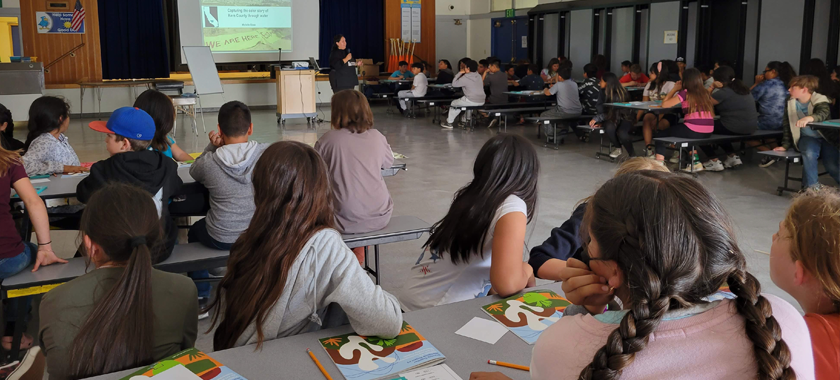
WE ARE HERE/ESTAMOS AQUI (WAH/EA) is a long-term art project that addresses the environmental justice issues of air and water pollution and the health risks associated with exposure to chemicals from wildfires, pesticides, and emissions from oil and gas development in Central Valley, CA. It shows the ways in which Latinx and often Spanish-speaking communities’ disproportionate exposure to air contamination is not an unfortunate externality, but rather is inherent to the power dynamics of the present day.
When pilot testing this project’s offshoot, Water Diaries/Diarios de Aqua project, 40 elders and gender expansive youth learned about arsenic and pesticides levels in their water for the first time. They trusted the results because they themselves conducted the study through natural dye and lab testing.
Said Glass: “Empowering elders, youth, and families to learn how to test their water firsthand and to work together to come up with solutions for change was life changing. I was able to witness the fear of the community when they discovered the levels of arsenic in their water and their hope knowing that we have found an immediate solution by installing arsenic filters. Art is a powerful tool to build environmental equity.”
Additional project outcomes included securing funding to expand the Water Diaries/Diarios de Agua project’s reach to other communities in Kern County, CA, that are the most impacted by environmental harms, and holding a successful bilingual culminating event where the team of collaborators, community partners, and community members shared their water test findings from the Water Diaries/Diarios de Agua project and screened the WE ARE HERE/ESTAMOS AQUI film to an audience of 45 people.
Shanjana Mahmud and Luke Eddins, Winter Species, New York
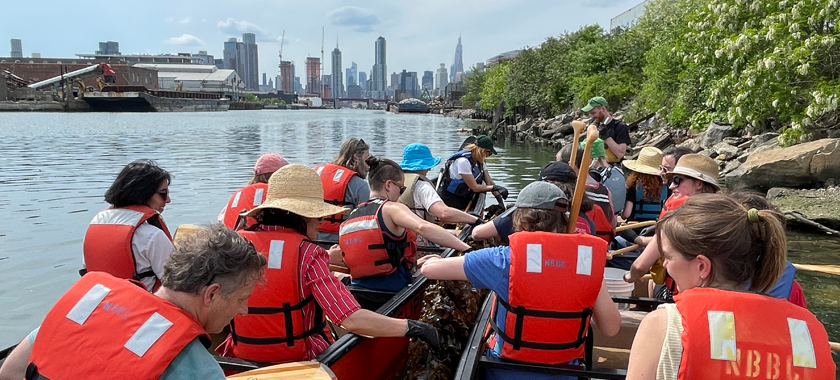
Winter Species is an experimental pollution remediation project via cultivation of seaweed in Newtown Creek, a designated Superfund site in New York City. The cultivation of native sugar kelp improves water quality by taking in excess nitrogen and phosphorus from combined sewage outflows to the waterway, and also takes in heavy metals from the water.
Mahmud and Eddins are testing the tissues of the kelp that they harvest to find out what they can do with them. Through this work, they are asking questions such as: If the seaweed is toxic, how can it be discarded properly? They are also considering mycoremediation, a method of utilizing fungi to remove or degrade heavy metals and persistent organic and emergent pollutants.
As the kelp growth peaks in the spring, they lead boat tours, check in on the kelp growth, take water samples, and assess environmental conditions as well as the visible qualities of the kelp. In May 2023, they organized four public canoe trips for 85 people. Each trip included a brief introduction to canoe paddling and an hour and a half on the water meandering to their kelp sites. This summer, as Seaweed City and as part of The Trust for Governors Island’s new living laboratory for climate, Mahmud and Eddins will grow 12 lines of kelp in New York Harbor in addition to operating a public-facing seaweed nursery on the island. Read more about it here via Bloomberg.
Said Mahmud: “Engaging with the public was something we were intimidated by primarily because of the logistics involved. But having the chance to do so with the four trips this year has convinced us that this is something we need to keep doing. They were fun, exhilarating, and exhausting. Participants afterwards seemed so delighted, curious, and motivated after our trip. We activated something for them. We would not have been able to do these trips this year without the grant.”
Ixchel Tonāntzin Xōchitlzihuatl, Borders Like Water, Texas
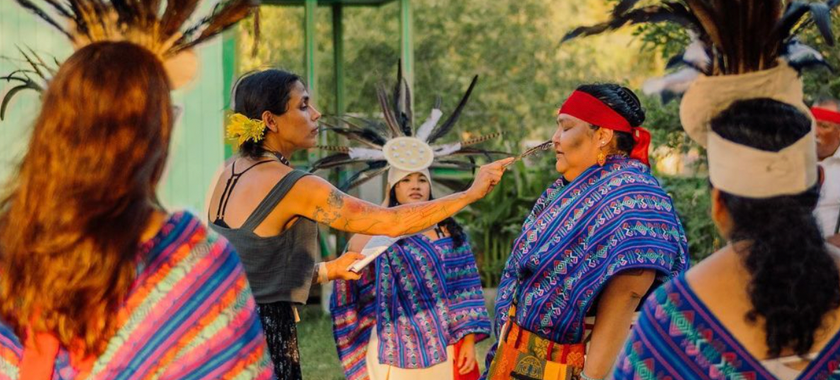
Tonāntzin Xōchitlzihuatl’s public event, Festival del Solsticio, engaged 200 people in Alamo, TX–mostly mixed indigenous immigrants from Hidalgo county near the US/Mexico border–in performances, ceremonies, and art-making near the time of the summer solstice. By extension, it also employed/supported 35 artists and arts workers.
The project was grounded in the fact that while the vast majority of immigrants and Latinos have indigenous ancestry, they become disconnected to ancestral cultural practices once in the United States. Festival del Solsticio helped women to re-indigenize and remember traditions from childhood, sharing memories of the healing properties of plants and cultural practices of sharing and healing through the dream world. At its conclusion, the women reported feeling more connected to the land. Said Tonāntzin Xōchitlzihuat: “Colonization stripped us of our connection to these important earth based traditions. Collective remembering requires coming together as we heal the wounds for the past and share in a process of returning to earth stewardship.”
Receiving the AWAW EAG was transformative for Tonāntzin Xōchitlzihuatl, helping to spur additional activities and support: “Our region knew that arts and culture can change the world but with this support we were able to have that shared experience. This initiative led to many other opportunities. The work has also been supported by the Center for Cultural Power, the Opportunity Agenda, and a confidential anonymous donor contributing $100,000 to the continuation of the project.”
She continued: “The reindigenization of people within the United States, especially women, is one of the most important pathways to environmental and social justice of our time. The US is the leader in military, prisons, capitalism, and earth extraction. We are remembering our ancestral traditions, reactivating our cultural DNA to build more sustainable, peaceful, and harmonious futures, not just for the nation but for the entire universe.”
The 2024 cycle of the Anonymous Was A Woman Environmental Art Grants program is open now through 5:00 PM ET Tuesday, April 16. Find out about additional awards and grants here.Sign up for our free bi-weekly newsletter to receive announcements about future NYFA events and programs.